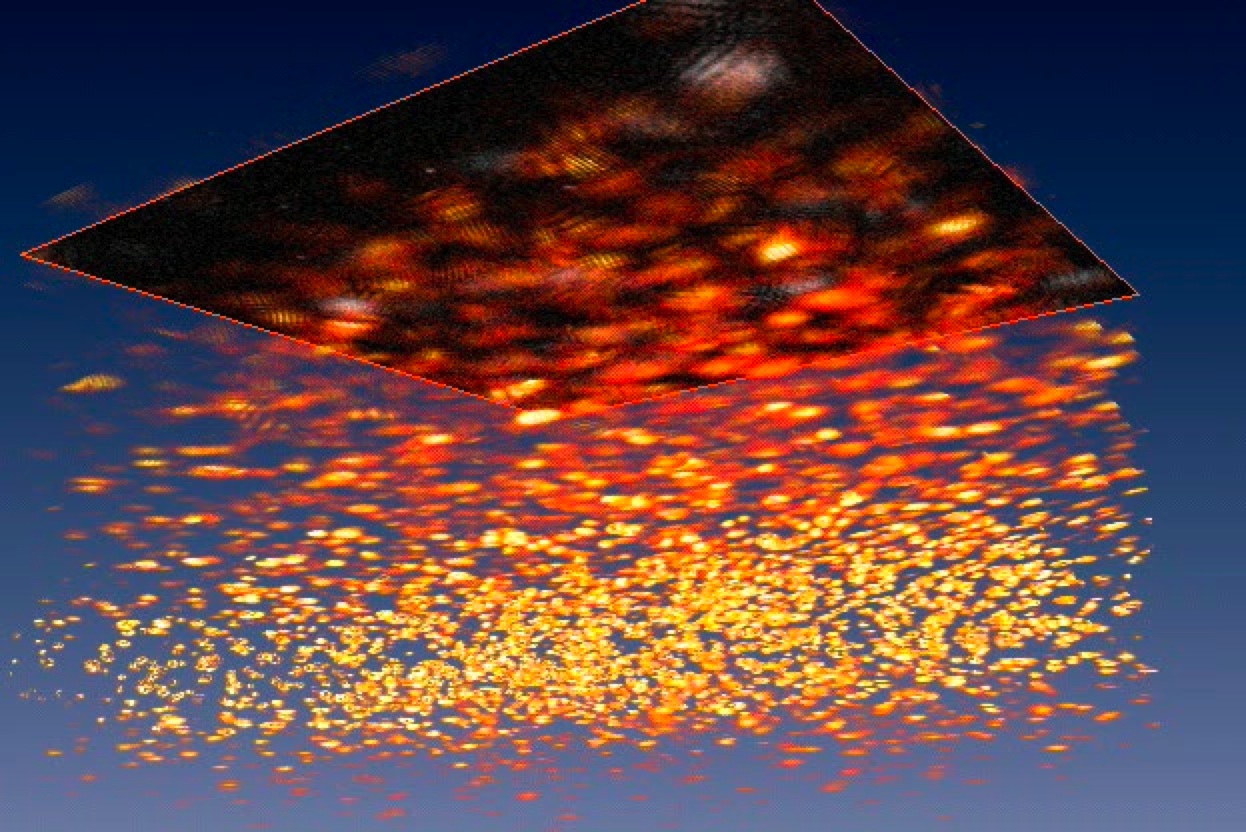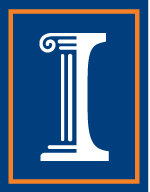Overview (by Bryn Davis):
Interferometric Synthetic Aperture Microscopy (ISAM) is an optical imaging technique developed and demonstrated by Ralston, Marks, Carney, and Boppart. Rather than imaging a fluorescent sample, ISAM measures light scattered from an unstained object. ISAM is based on Optical Coherence Tomography (OCT), a maturing noninvasive technique that has already found application, particularly in opthamology. In addition, the Boppart group is actively pursuing the application of OCT and ISAM to other biomedical tasks, such as cancer detection in a variety of tissue types.
OCT and ISAM both rely on interferometric detection of scattered light. A broadband source is used and the resulting data are a function of two spatial variables and the wavelength - (x,y,λ). With the correct processing the data can be used to infer object structure in three spatial dimensions - (x,y,z). In OCT the image is reconstructed only where the probing light is in focus. The achievement of ISAM is to recognize that light outside of the focus can be computationally focused after data acquisition. This greatly improves the depth-of-field available. As in OCT, the processing used in ISAM requires interferometric detection of data, so that phase information is available. As the name of this technology indicates, ISAM has strong commonalities with Synthetic Aperture Radar (SAR). OCT can be viewed as analogous to standard radar.

FIG. 1. Volume rendering of point particles imaged with OCT.
|

FIG. 2. Volume rendering of point particles reconstructed with ISAM .
|
References:
- T S Ralston, D L Marks, P S Carney, and S A Boppart, ``Inverse scattering for optical coherence tomography," Journ. Opt. Soc. Am. A, 23, 1027-1037, (2006).PDF
- D L Marks, T S Ralston,P S Carney, and Stephen A. Boppart, ``Inverse scattering for rotationally-scanned optical coherence tomography," Journ. Opt. Soc. Am. A, 23, 2433-2439 (2006).PDF
- T S Ralston, D L Marks, S A Boppart, and P S Carney, ``Inverse scattering for high-resolution interferometric microscopy," Opt. Lett, 31, 3585-3587 (2006).PDF
-
T S Ralston, D L Marks, P S Carney and S A Boppart, "Interferometric synthetic aperture microscopy," Nature Physics 3, 129-134, (2007). PDF
- B J Davis, S C Schlachter, D L Marks, T S Ralston, S A Boppart and P S Carney,"Non-paraxial vector-field modeling of optical coherence tomography and interferometric synthetic aperture microscopy," Journ. Opt. Soc. Am A. 24,2527-2542, (2007).PDF
- B J Davis, D L Marks, T S Ralston, S A Boppart and P S Carney,
``Autocorrelation artifacts in optical coherence tomography and interferometric synthetic aperture microscopy," Opt. Lett, 32, 1441-1443,
(2007).
PDF
- D L Marks, T S Ralston, S A Boppart and P S Carney, ``Inverse scattering for frequency-scanned full-field optical coherence tomography," Journ. Opt. Soc. Am A, 24, 1034-1041 (2007). PDF
|
